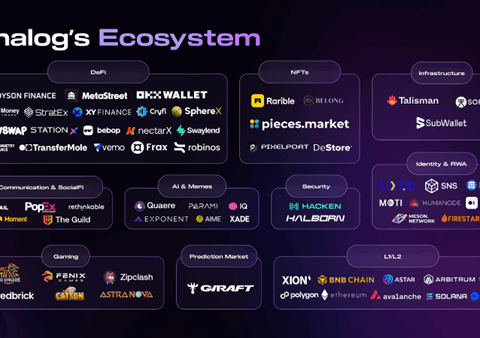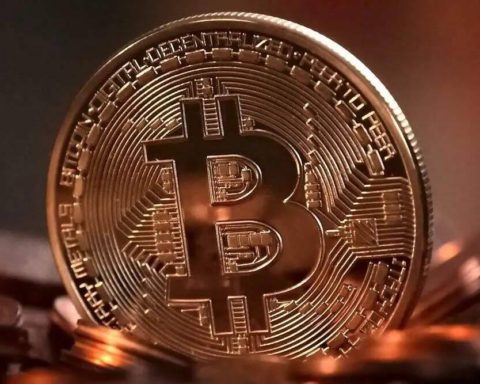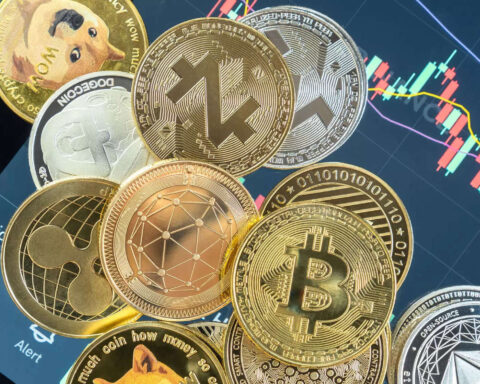With there being thousands of crypto projects to choose from, it can be difficult to determine which are the best to invest in.
To make matters even more complicated and precarious, an alarmingly high percentage of crypto projects end up being abandoned by their developers – or even turn out to be rugpulls.
In this review, we rank the best crypto projects to invest in, as of 2023.
1. Ripple (XRP)
Ripple and XRP are two major concepts in the cryptocurrency sector that are intricately linked yet fundamentally different. Understanding their distinction and the impact they’ve had on the global financial system requires a deeper dive into each of their functionalities.
Ripple is the name of a technology company based in San Francisco, founded in 2012, that focuses on the development of payment and real-time gross settlement system technology.
The primary aim of Ripple is to streamline the process of cross-border transactions, which are typically expensive and time-consuming with traditional banking systems.
The solution Ripple proposes is RippleNet, a global payments network that leverages distributed ledger technology to enable financial institutions to transact with one another directly and in real-time.
RippleNet is designed to be a network of institutional payment providers, such as banks and money services businesses, that use solutions developed by Ripple to provide a seamless experience to send money globally.
Ripple’s most known products include xCurrent and xRapid. xCurrent allows banks to settle cross-border payments with end-to-end tracking, while xRapid uses XRP, Ripple’s digital currency, to enable liquidity for banks and reduce the costs of cross-border transactions.
Which brings us to XRP. XRP is a digital asset and cryptocurrency that was created by Ripple. It plays a dual role as both a cryptocurrency and a technology protocol for facilitating cross-border transactions.
XRP as a cryptocurrency is used primarily as a bridge currency for transferring value between different fiat currencies on the Ripple network.
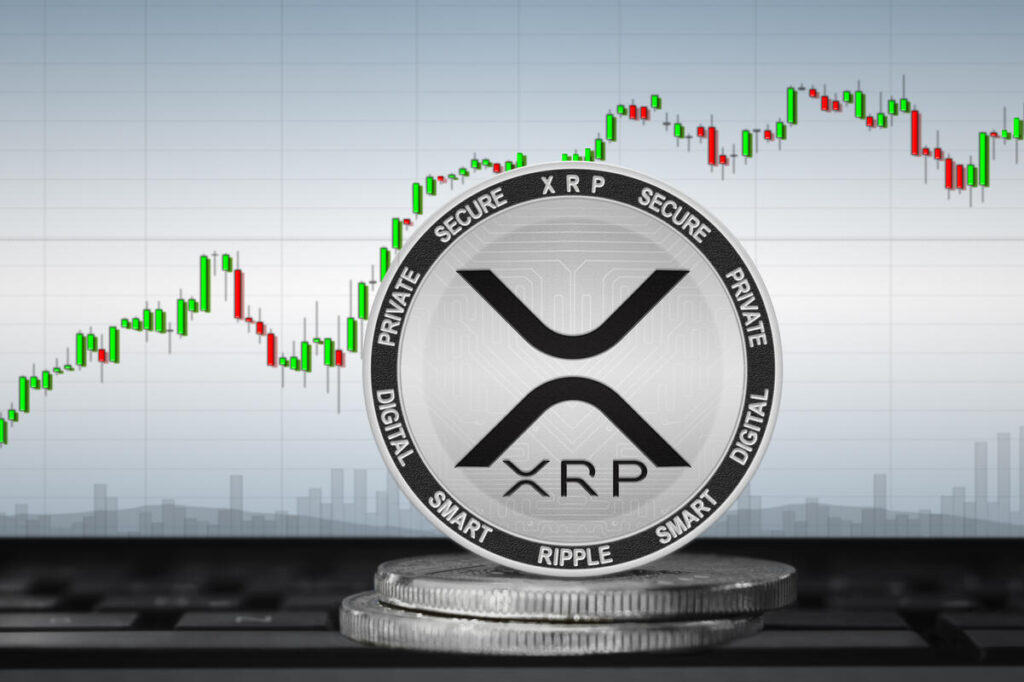
As of Ripple’s design, a total of 100 billion XRP tokens were created, and no more will be produced. This deflationary nature sets XRP apart from cryptocurrencies like Bitcoin, which are inflationary with new coins being mined over time.
XRP transactions are confirmed by consensus among Ripple’s network members, rather than proof-of-work or proof-of-stake mechanisms, which contributes to its speed.
It’s this feature that allows XRP to process transactions significantly faster and more efficiently than many other cryptocurrencies.
The utility of XRP is best demonstrated in Ripple’s product, xRapid. Financial institutions using xRapid for cross-border payments first convert the currency into XRP, then send the XRP to the receiving institution where it’s converted into the desired currency.
This process reduces the cost and time required for such transactions as it eliminates the need for pre-funded nostro accounts.
However, Ripple and XRP have not been without controversy. Ripple Labs, the company, has faced legal challenges, notably from the Securities and Exchange Commission (SEC) in the United States, which claims that XRP is a security and not a cryptocurrency, thus it should have been registered as such.
This ongoing lawsuit has cast a shadow over XRP, causing some cryptocurrency exchanges to delist it until there’s clarity about its legal status.
Despite the challenges, Ripple and XRP have made a significant impact on the global financial system. Many financial institutions are already using or experimenting with Ripple’s technology to improve their cross-border payment systems.
This is testament to the transformative potential of Ripple’s technology and the utility of XRP as a bridge currency in international transactions.
All things considered, Ripple as a company and XRP as a digital asset have marked a new era in the financial world.
The mission to revolutionize global money transfers by providing an alternative, fast, and low-cost method is the driving force behind Ripple. XRP, as a key component of this mission, provides the liquidity necessary for such a system to operate efficiently.
As the legal battles and the cryptocurrency market evolve, the path ahead for Ripple and XRP will undoubtedly be worth watching. The technology and ideas they represent could shape the future of global finance.
Key Facts:
- Market capitalization of $40.5 billion
- Circulating supply of 52.5 billion XRP
- Current price of $0.7705
2. Chainlink (LINK)
Chainlink is a leading decentralized oracle network that is playing a significant role in the evolution of blockchain technology. It addresses the need for external data in blockchain-based smart contracts and broadens the possible scope of applications within the blockchain sphere.
To understand the value Chainlink brings to the table, it’s necessary to comprehend its core functions and benefits in a blockchain context.
At the heart of Chainlink’s operations is the smart contract. A smart contract is a self-executing contract with the terms of agreement between parties being directly written into lines of code.
It automates transactions without requiring an intermediary, reducing costs and inefficiencies. However, these smart contracts can’t interact with data outside their network. This is where Chainlink comes in.
Chainlink serves as a bridge between smart contracts and the real world. It uses a network of decentralized oracle nodes to collect and verify real-world data before feeding it into a blockchain. Oracles are the agents that find and verify real-world occurrences and submit this information to a blockchain to be used in smart contracts.
The decentralized nature of Chainlink’s network of oracles ensures a high level of security and reliability, reducing the risk of any single point of failure.
Chainlink’s native cryptocurrency, LINK, serves a specific function within this ecosystem. It’s used to pay node operators in the network for their services in retrieving data, converting data into blockchain readable formats, and increasing the reliability of the data.
Additionally, it’s also used as a staking token by the node operators as a form of collateral to ensure reliable, honest service.
Chainlink isn’t just about bringing external data into blockchains; it’s also about ensuring the data’s reliability. Chainlink’s decentralized oracle network incentivizes honest reporting and penalizes dishonest behavior.
If a Chainlink node operator provides inaccurate information, they risk losing their staked LINK tokens. This mechanism ensures the accuracy and reliability of data being fed into the smart contracts, a critical requirement in many industries.
Furthermore, Chainlink’s flexibility makes it blockchain agnostic. This means it can serve multiple blockchains, not just one, making it a universal adapter for all blockchains. This unique feature makes Chainlink an integral part of the blockchain ecosystem, providing vital interoperability functions.
Since its launch in 2017, Chainlink has been embraced by numerous projects in the cryptocurrency space, from DeFi platforms to large-scale enterprise solutions.
Chainlink’s ability to secure and reliably connect smart contracts with high-quality data sources opens up new possibilities for blockchain applications, enhancing their utility and practicality in real-world scenarios.
The scope of Chainlink extends beyond financial applications. It has the potential to impact multiple sectors, including insurance, supply chain, gaming, and more.
For instance, in the insurance industry, a smart contract could automatically pay out claims when a certain event happens, like a flight delay. Chainlink would provide the real-time flight data to the smart contract, enabling this automatic payout to happen.
By serving as a reliable bridge between the blockchain and the real world, Chainlink allows smart contracts to interact with real-world data, opening up endless possibilities for blockchain applications.
Its unique position in the market, combined with its robust decentralized oracle network, has positioned Chainlink as a leading player in the blockchain industry.
With an ever-growing ecosystem of projects utilizing its technology, Chainlink is undoubtedly one of the best crypto projects to invest in, in 2023.
Key Facts:
- Market cap of $4.3 billion
- Circulating supply of 538 million LINK
- Current price of $8.01
3. Cardano (ADA)
Cardano is an open-source, decentralized blockchain platform founded by Ethereum co-founder Charles Hoskinson and developed by the company IOHK. Launched in 2017, Cardano aims to be the world’s financial operating system by establishing decentralized financial products similarly to Ethereum, but with a robust focus on security, scalability, and sustainability.
The platform has garnered attention for its unique layered architecture and its commitment to peer-reviewed scientific research as building blocks for updates and modifications.
Cardano’s architecture consists of two layers: the Cardano Settlement Layer (CSL) and the Cardano Computation Layer (CCL). The CSL manages the cryptocurrency ADA and handles transactions, while the CCL is responsible for running smart contracts and decentralized applications (dApps).
This layered structure is one of Cardano’s defining features, separating the ledger of account values from the reason why values are moved from one account to the other. This provides more flexibility in the design and execution of smart contracts, enhancing security and performance.
At the heart of Cardano is its native cryptocurrency, ADA, named after Ada Lovelace, a 19th-century mathematician who is recognized as the first computer programmer. ADA is used for staking, transaction fees, and will eventually be used to power smart contracts and dApps on the Cardano platform.
Unlike Ethereum, which uses Proof-of-Work consensus mechanism, Cardano uses a unique Proof-of-Stake algorithm called Ouroboros. Ouroboros aims to be more energy-efficient and democratic than Proof-of-Work.
In Cardano’s Ouroboros, “epoch” time is divided into slots, and slot leaders are chosen randomly from the pool of ADA holders who are staking their coins. These slot leaders validate transactions and add them to the blockchain.
Cardano’s approach to development sets it apart from many other cryptocurrencies. The platform places a heavy emphasis on academic research, with many of its protocols being academically peer-reviewed. This careful, considered approach is designed to ensure the robustness and security of the platform, but it also means that development can be slower than some other cryptocurrencies.
Another key difference is Cardano’s philosophy towards decentralization. It has a strong community governance model where future development and changes to the platform are voted on by the community of ADA holders. This is designed to prevent a split in the community or a “hard fork.”
In terms of real-world use cases, Cardano is exploring a range of applications. These include the creation of verifiable credentials for academic certificates on its blockchain and exploring ways to provide banking services to those in developing countries who lack access to traditional banking infrastructure.
Cardano also aims to make a difference in the decentralized finance (DeFi) sector. With the introduction of smart contracts on its platform, Cardano aims to create secure and scalable DeFi applications that can potentially outperform existing options on networks like Ethereum.
However, like any cryptocurrency, Cardano is not without risks. The platform is still in development, and its ambitious roadmap has several stages yet to be completed. There is always the risk that Cardano’s promises won’t come to fruition or that the platform won’t gain the widespread adoption it aims for.
Key Facts:
- Market capitalization of $10.9 billion
- Circulating supply of 34.9 billion ADA
- Current price of $0.3118
4. Binance Coin (BNB)
Binance Coin, also known as BNB, is the native cryptocurrency of the Binance exchange, one of the world’s largest and most popular cryptocurrency exchanges.
Founded in 2017, Binance and its native coin BNB have been at the forefront of the cryptocurrency industry’s growth and adoption, demonstrating a unique approach to leveraging blockchain technology in the digital finance realm.
BNB was originally launched as an ERC-20 token on the Ethereum blockchain during an Initial Coin Offering (ICO) in July 2017.
The coin was created to raise funds for the development of the Binance exchange. Later, in 2019, Binance launched its own blockchain, Binance Smart Chain (BSC), and moved BNB off the Ethereum network onto BSC.
There are several utilities for BNB in the Binance ecosystem. It can be used to pay for trading fees on the platform, participate in token sales on the Binance Launchpad, and more.
One of the most notable benefits of using BNB is that Binance offers users a significant discount on trading fees if they are paid with the token.
The functionality of BNB extends beyond the Binance exchange. With the launch of Binance Smart Chain, BNB has become instrumental in a range of decentralized applications (dApps). BNB is used for transaction fees on the BSC, much like how Ether is used for transaction fees on Ethereum.
The low fees and high performance of BSC have made it popular among developers and users, which in turn has driven further usage and demand for BNB.
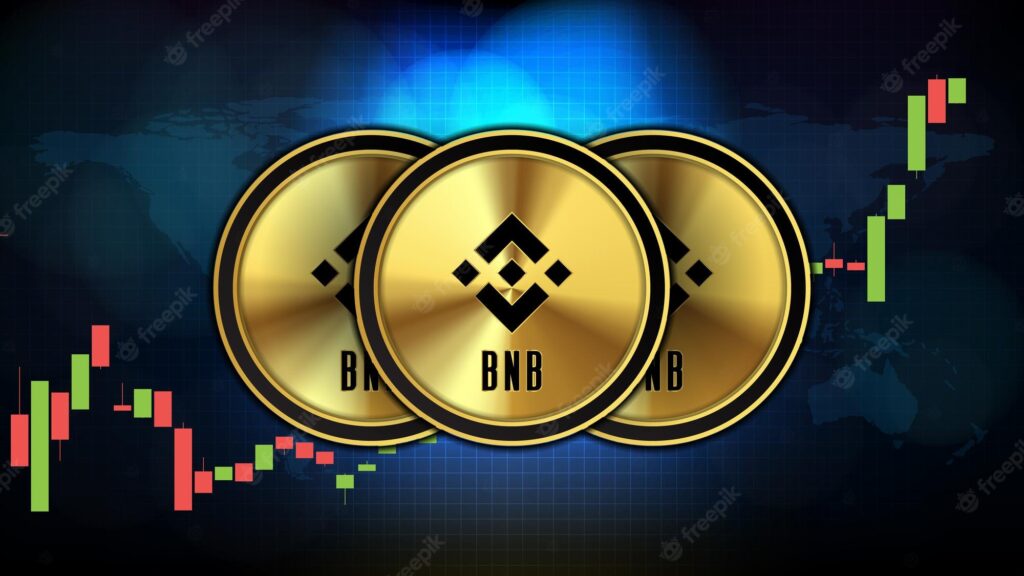
Additionally, BNB is used for staking on the Binance Smart Chain. Staking involves participating in the network by holding and pledging a cryptocurrency in a wallet to support the operations of a blockchain network. This process helps to secure the network and process transactions, and in return, stakers can earn rewards.
Another significant aspect of BNB is the coin burn mechanism, a deflationary action designed to control the number of tokens in circulation and, theoretically, increase the token’s value over time. Binance commits to using 20% of its profits each quarter to buy back and burn BNB until 50% of the total supply (100 million BNB) is destroyed.
BNB has also been embraced by other platforms outside of Binance. It’s often used as a utility token on multiple platforms and services, including loan collateral, payment for transaction fees, and more. This widespread adoption has significantly increased the utility and demand for BNB, contributing to its value growth.
Despite these positives, BNB, like any cryptocurrency, comes with its risks. It’s tied closely to the fortunes of the Binance exchange, meaning any regulatory issues or other significant events impacting Binance could affect BNB. Additionally, the cryptocurrency market’s inherent volatility also applies to BNB.
Key Facts:
- Market cap of $37.3 billion
- Circulating supply of 153.8 million BNB
- Current price of $242.39
Disclaimer: None of the information contained within this article is financial advice.



